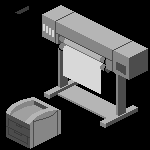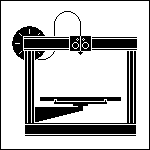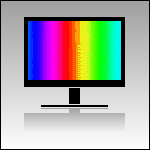Input & Output Devices
 |
New Input & Output Devices
- Continued improvements to sonic measurement devices, laser scanners, photogrametry systems and 3-D printers result in increased popularity and decreased unit prices. Also note the advent of “smart” sensors that are embedded in all manner of electrical appliances.
- By the year 2010, the use of bio-metric sensors will be commonplace. They will be used (among other things) to authenticate the identity of users.
- Prototypes of “Electronic Paper” have recently been demonstrated in laboratories. “Electronic Paper” is actually a thin film display technology. Images appear on the surface of the film when a carefully controlled electric charge is applied to a random matrix of magnetically sensitive opaque beads. Electronic Paper is as lightweight and flexible as paper, but it’s far more durable.
|
 |
Speech Recognition
- Note the continued maturation of speech recognition software. The exponential increase in micro-processing power has enabled speech recognition software to improve significantly. Translation accuracy and speed are the main improvements. Speech recognition software holds the promise of revolutionizing the way that people interact with computers. If the technology became widely popular, it would change the way work gets done in an office. A reliable speech recognition system could easily outpace even the fastest typist. Reducing or eliminating the need for keyboard input would be a significant advance in computer interface design and would precipitate the wholesale redesign of many software packages since users would likely demand support for this new technology. IBM has recently introduced an updated version of its speech recognition software. Time will tell if it meets customer expectations and catches on.
- By the year 2010, speech recognition and language translation on the fly will be commonplace.
|
 |
Virtual Reality Devices
A new generation of output devices has recently been introduced onto the market. These devices combine motion sensors and gesture detectors with pressure feedback systems as well as portable video displays to create a new CAD technology called Virtual Reality. Most Virtual Reality systems look like clothing (i.e., gloves, body suits, goggles and helmets). They rely on advanced hardware and software to allow users to create “virtual” objects in space. Currently, these systems are crude, slow and expensive. Future systems should show significant improvement. These systems hold the promise of revolutionizing CAD technology.
|
 |
Rapid Prototyping
Rapid Prototyping (RP) is a catch phrase for several different types of 3D output technologies. RP has become popular because it allows designers to quickly create and test proposed designs prior to their full scale construction or manufacture. Prototypes are used to test a design’s appearance, its fit and finish, its geometry (i.e. size and shape) and part tolerances.
RP technology is currently expensive. As was the case in the early days of plotter technology, unit prices can be expected to decline as sales increase. The current high cost of the technology has given rise to a service industry that owns or operates the RP machinery and creates models on demand. As the price of the technology declines, we can expect to see AEC firms purchasing their own equipment. When that begins to happen, we should see the market expand exponentially which should force prices to fall rapidly.
The use of rapid prototyping technology can be expected to expand significantly in the next ten years.
|
 |
Advanced Graphics Cards and High Resolution, Flat Screen Color Monitors
- Video display technology is continuing to evolve. A new generation of graphics controller cards and monitors has just reached the market. These products offer higher resolution and more reliable electronics then previous equipment. Multimedia and interactive video technology is also continuing to evolve.
- The widespread acceptance of extremely high resolution, flat screen color monitors is imminent. Their advent will significantly alter the price/performance ratio currently enjoyed by the best of today’s monitors. As a consequence, monitors which today are considered top of the line will be forced to drastically reduce their price in order to compete with newer, higher quality displays. We can expect to see future color monitors to have better reliability, more colors, better resolution and a lower price.
- Note the development of affordable very large size flat screen video displays. These displays will find their way into simulation rooms in which all room surfaces are video displays (ala Star Trek’s “holodeck”). In addition, large screen displays may be combined with touch screen technology to build a “drafting” interface that looks and feels like a traditional drafting board. Recent advances in “electronic ink” technology hold the promise of very cheap, flat screen, portable black and white computer displays (i.e. pen based computers).
- Several holographic video systems are currently under development. These systems can display computer generated holograms at rates that are close to near real-time video. These systems are still in the early stages of development and much work remains to be done before they can be commercialized.
|
(Previous Page)(Next Page)